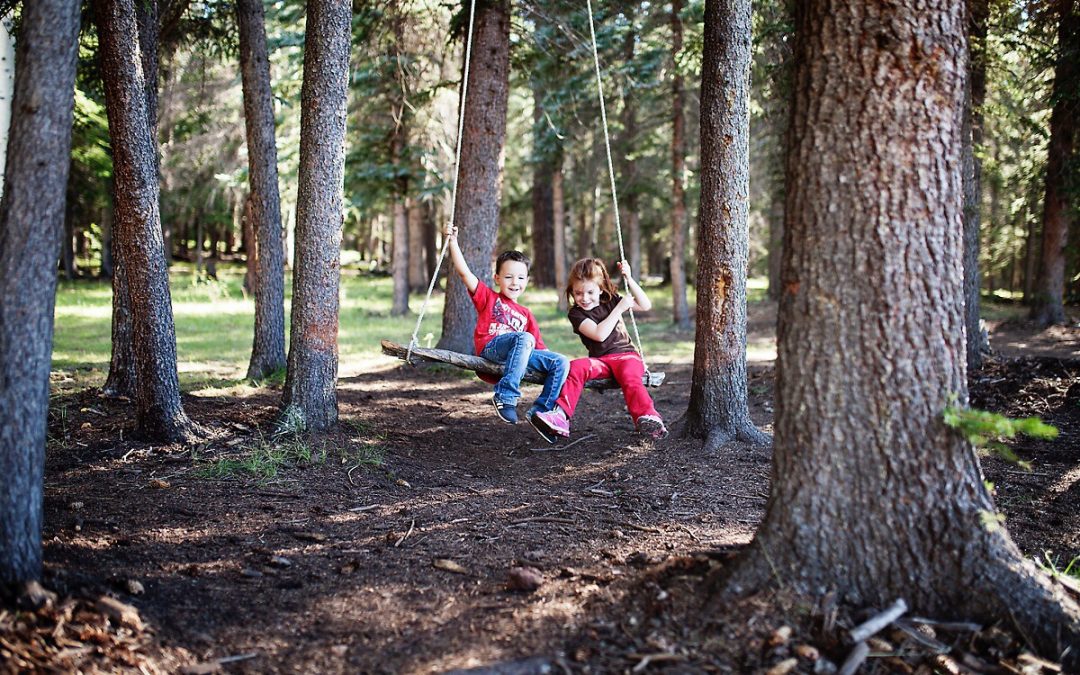If you’re like a lot of adults, your favorite childhood memories probably include swimming in lakes and building forts in your backyard. That’s less true for children today.
Only 6% of children ages 9 to 13 play outside on their own in a typical week, according to The Nature Conservancy. Among preschoolers, almost half aren’t taken outside by their parents for a walk or playtime each day, says a study published in the journal Archives of Pediatrics and Adolescent Medicine.
That same study found that the factors affecting outdoor play probably aren’t what you’d expect. Family income, neighborhood safety, and hours spent watching TV had little effect. What mattered was having plenty of playmates and parents who exercised regularly.
What can you do to help your kids spend more time outdoors? Take a look at these ideas for encouraging your children to go outside.
Benefits of Outdoor Play
1.Build healthy bodies. Sun exposure provides Vitamin D, which builds strong bones. Physical activity also promotes motor skills and agility.
2.Develop strong minds. Spending time outdoors has been found to stimulate creative thinking, problem-solving abilities, and higher IQ scores. It’s good for mental health at any age.
3.Connect with nature. Direct contact with plants and animals can help children to understand and value the environment. They’ll be more likely to make responsible choices as they grow up.
Outdoor Activities Close to Home:
1. Add water. Kids love getting wet. Even if you can’t build an inground pool, you can spray the hose for your kids to run through.
2.Do messy crafts. Paints and markers can be tough on your living room furniture, but almost anything goes outdoors. Draw chalk game boards on your driveway. Create clay vases or paper mache animals. Fool around with face painting or tie-dying.
3.Eat al fresco. Meals give you at least 3 opportunities a day to pull up a chair outdoors. Serve breakfast on your deck, and make lunch a picnic on the grass.
4.Talk with your school. Many schools have cut back on recess time. Advocate for recess, outdoor sports, and other programs that help students spend time outdoors.
5.Limit hours online. While moderate TV time is usually okay, observe reasonable boundaries. Set a curfew on any screen time before bed, and limit internet usage apart from schoolwork.
6.Allow for downtime. How many activities are your children enrolled in? Block out hours for unstructured play in between dance lessons, language classes, and science labs.
Outdoor Activities Away from Home:
1.Take a hike. Walking and hiking are great exercises at little expense. Keep comfortable shoes in your car so you can go exploring when you come across something interesting.
2.Visit a park. Take advantage of local and national parks. Look up what amenities they offer like pools, fountains, and workout circuits.
3.Go camping. Invest in some tents and other basic gear to see if your family likes sleeping outdoors. You can plan longer and more adventurous trips as you become more experienced…
4.Plan active vacations. How many vacation days do you have saved up? Choose destinations where your family can spend significant time outdoors. Go snorkeling in the ocean or skiing in the mountains.
5.Ride your bikes. Take your bikes out for leisure trips or even to run some errands. Check out the bike trails in your community, and make sure to wear your helmets.
Help your children to enjoy more fresh air and unstructured play in the great outdoors. They’ll be likely to grow up happier and healthier and achieve more.












